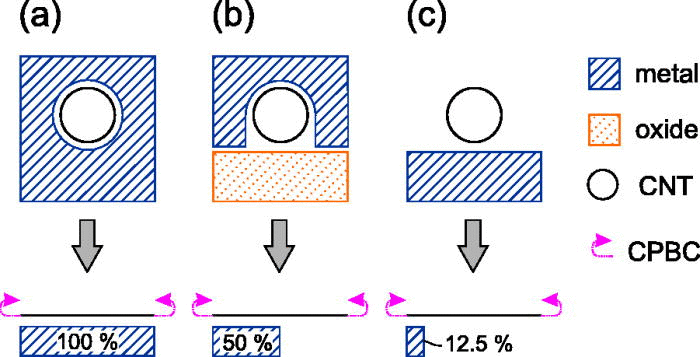Using a dedicated combination of the non-equilibrium Green function formalism and large-scale density functional theory calculations, we investigated how incomplete metal coverage influences two of the most important electrical properties of carbon nanotube (CNT)-based transistors: contact resistance and its scaling with contact length, and maximum current. These quantities have been derived from parameter-free simulations of atomic systems that are as close as possible to experimental geometries. Physical mechanisms that govern these dependences have been identified for various metals, representing different CNT-metal interaction strengths from chemisorption to physisorption. Our results pave the way for an application-oriented design of CNT-metal contacts.

Using a dedicated combination of the non-equilibrium Green function formalism and large-scale density functional theory calculations, we investigated how incomplete metal coverage influences two of the most important electrical properties of carbon nanotube (CNT)-based transistors: contact resistance and its scaling with contact length, and maximum current. These quantities have been derived from parameter-free simulations of atomic systems that are as close as possible to experimental geometries. Physical mechanisms that govern these dependences have been identified for various metals, representing different CNT-metal interaction strengths from chemisorption to physisorption. Our results pave the way for an application-oriented design of CNT-metal contacts.
